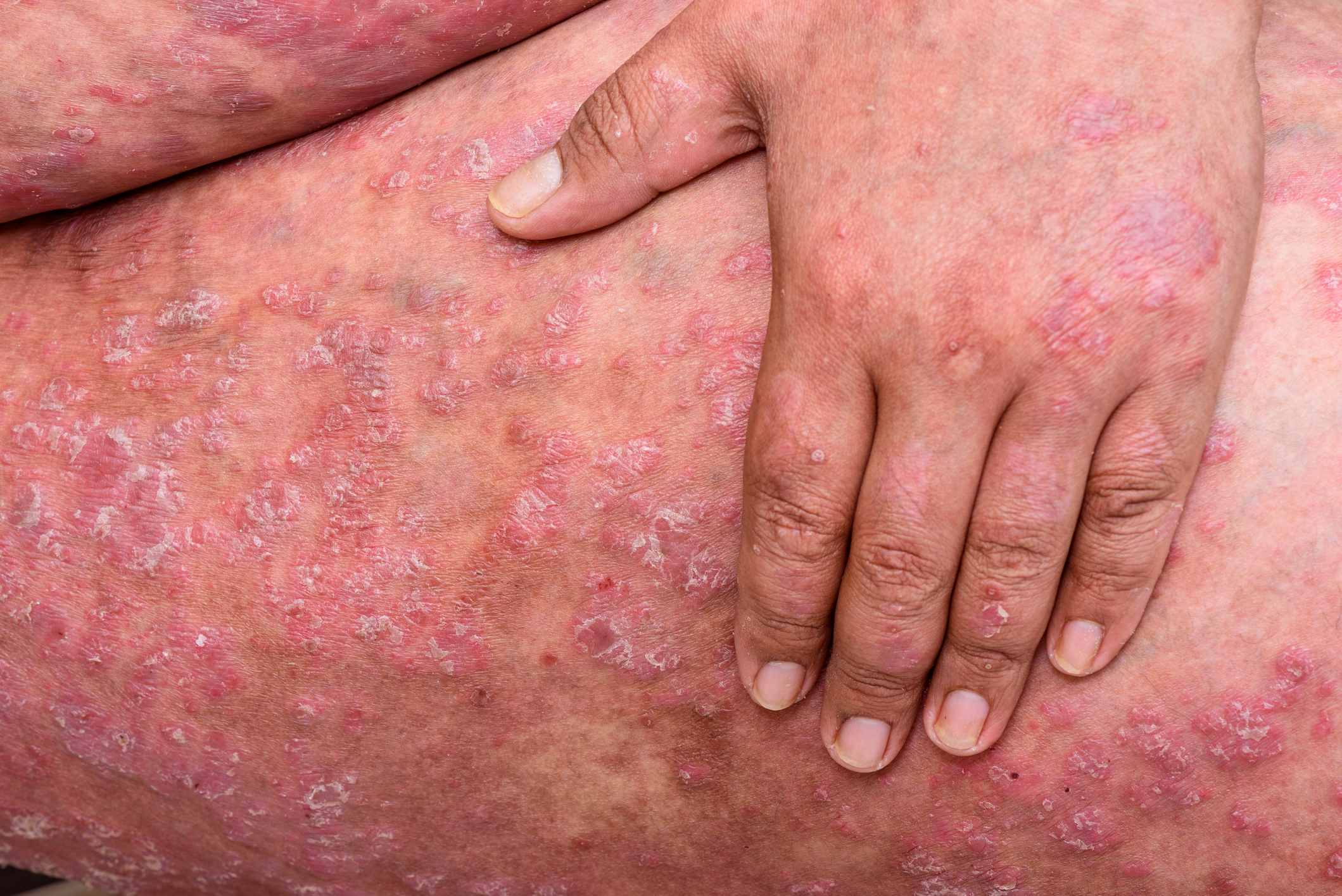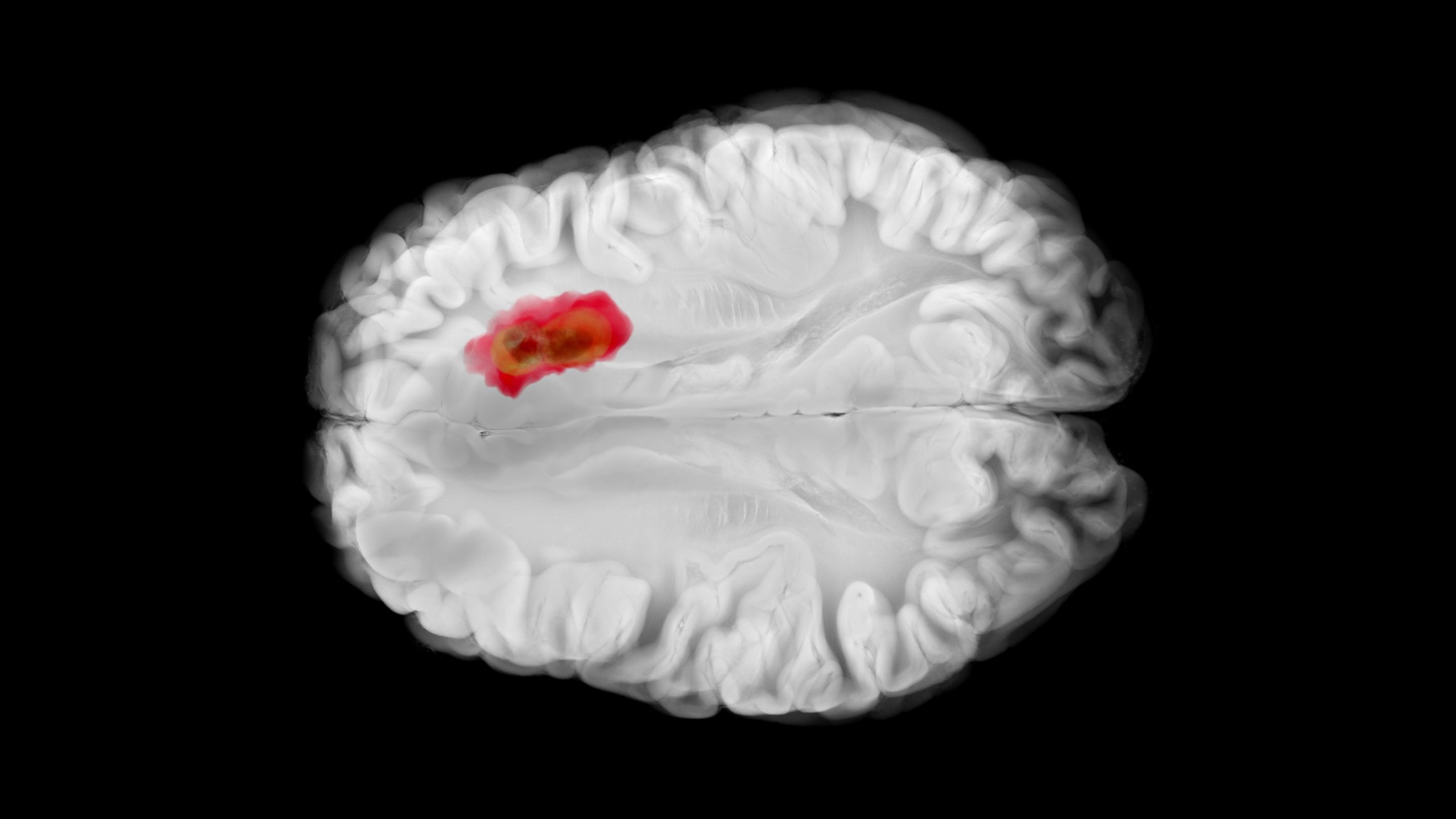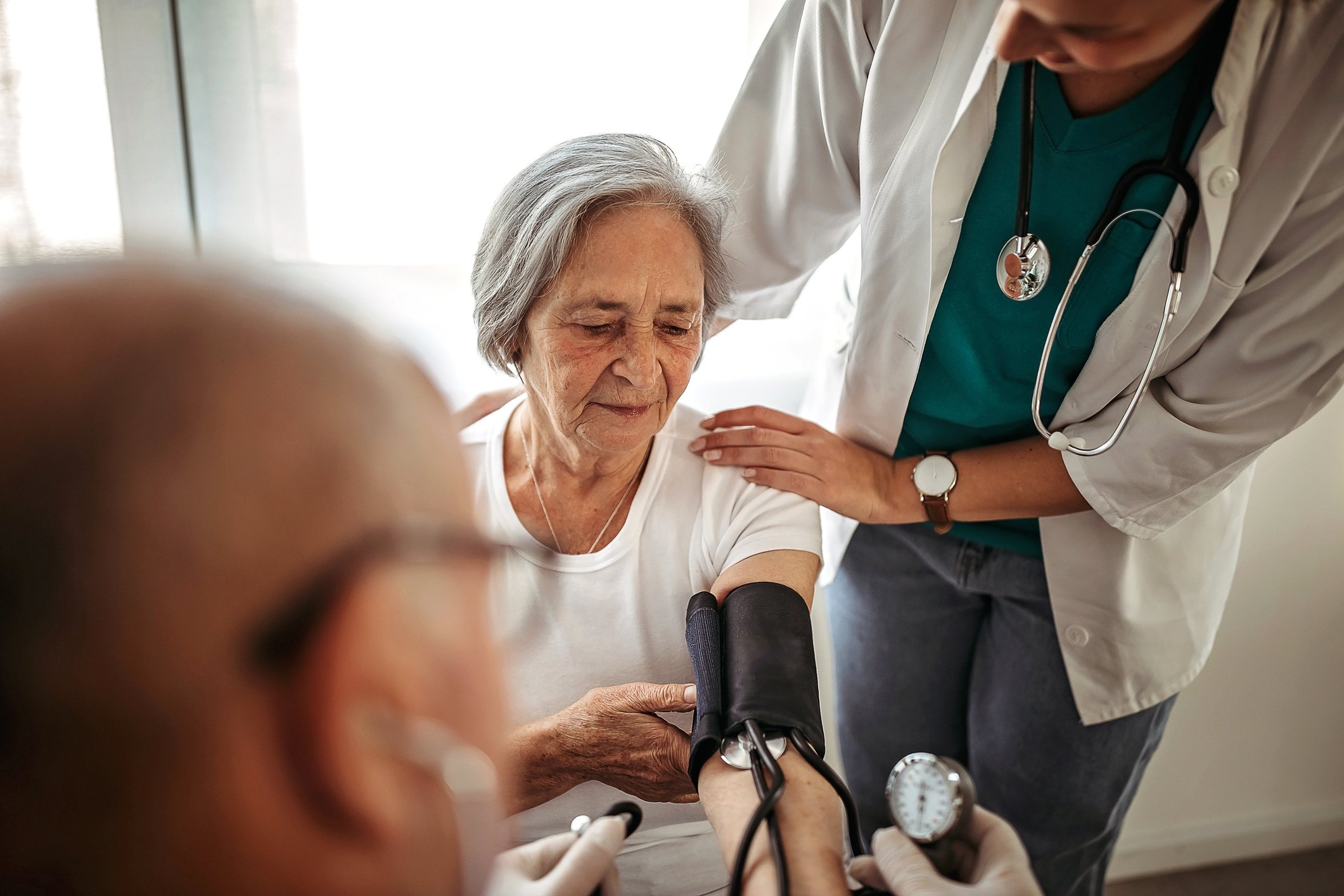With the demographic change of the population, age-related diseases of the eyes and their appendages are also increasing. In recent years, the range of new therapeutic options has expanded, and the diagnostic field also offers a variety of (new) possibilities. The following congress report provides an overview.
“There is really no structure on the eyes and their adnexa that cannot age” Dr. Küper reported at the beginning of her talk. With the demographic change of the population, age-related diseases of the eyes and their appendages are also increasing. In recent years, the range of new therapeutic options has expanded, and the diagnostic field now also offers a variety of (new) options. After the clarifying visit with the ophthalmologist, experience has shown that patients often wish to consult their general practitioner. The following congressional report provides an overview of common age-related changes in the eyes.
Age changes in the anterior segment of the eye
The important eyelid structures that can sag and age are the skin, the muscle (eyelid elevator muscle, lower eyelid retractor) and the septum.
Dermatochalasis: It is characterized by less elastic skin on the upper or lower eyelid. The septum may lose elasticity and fat prolapse may occur.
The treatment of choice is blepharoplasty. In this procedure, part of the skin and muscle in the eyelid area is excised. A new eyelid crease must then be constructed.
Ptosis: This is often a dystrophy or fatty degeneration of the eyelid elevator muscle in old age. In a levator resection, the levator muscle is shortened and the portion that is still functional is fixed to the tarsus, and the degenerated portions are resected. The requirement is that there is a levator function of at least 5 mm. In brow ptosis, the elasticity of the forehead skin has decreased. Those affected have to pull the forehead upwards to lift the eyelid skin as well – so that they can still see sufficiently. Here, a strip of skin and muscle just above the eyebrow is removed. If necessary, blepharoplasty can be performed afterwards.
A therapeutic innovation in this field is the use of theCO2 laser. Advantage: Time saving and less blood. Disadvantage: Stitches must remain in place for at least two weeks (with conservative surgery, removal is possible after only one week).
Eyelid malpositions: Senile ectropion and entropion are distinguished. The pathophysiology is the same in both diseases, namely a slackening of the lower eyelid retractors and the tarsus. In addition, horizontal eyelid drooping is usually present. In the case of ectropion, this causes the eyelid to fall outward. Due to an additionally present pretarsal orbicular hypertrophy, the eyelid rolls inwards together with its eyelashes in entropion and trichiasis occurs.
The therapeutic goal in ectropion is to correct the epiphora caused by the inflammatory altered eye as well as the metaplasia caused by the permanently turned out mucosa. A keilexicion is performed if there is no horizontal eyelid droop, otherwise a lateral canthopexy is usually performed: the lateral eyelid frenulum is split, the tarsus is dissected, and both are subsequently pulled under the periosteum [1]. In entropion, the lower eyelid retractors are refixed. Both operations constitute a health insurance benefit.
Tumors: Benign and malignant tumors can also occur in the eye. If they are benign changes that do not affect the patient, they can usually be left in place. In case of uncertainty regarding the dignity, a sample biopsy should always be taken.
Among the malignant changes, the speaker mentioned, for example, basal cell carcinoma, which can occur on the eyelid, and CIN (conjunctival intraepithelial neoplasia), which can transform into squamous cell carcinoma.
Surgical intervention remains the gold standard for malignant eyelid tumors. There is the option of a two-stage procedure, in which the tumor is removed just inside the healthy tissue and additional marginal incisions are made. As a result, a re-excision may be necessary under certain circumstances. Mohs surgery works in a similar way: after close tumor removal, thin lamellae are repeatedly recut and examined directly intraoperatively until safe removal in healthy tissue has occurred. Although this procedure is gentle on the tissue, it is very time-consuming. If the frozen section technique is used intraoperatively, a minimum distance must be maintained in healthy tissue. This turns out between 3-5 mm in size, depending on the type of cancer.
Cryotherapy should only be performed if the patient otherwise refuses any surgical therapy, the speaker said. Vismodegib p.o. may also be considered for advanced or metastatic basal cell carcinoma in elderly patients. It acts via inhibition of the Hedgehog signaling pathway. These tumors very rarely respond to radiotherapy. Dr. Küper also mentioned Aldara ointment (Imiquimod 5%) as another option for non-surgical therapy. The use is as an off-label use. Similarly, a 20% risk of recurrence is associated with this therapy [2].
Sicca syndrome: Sicca syndrome describes a quality problem of the tear film (faulty composition) or an insufficient amount of the physiological tear film. The disease may occur more frequently in old age in connection with systemic diseases such as rheumatism or Sjoegren’s syndrome. About 20% of the patients in an opthalmologic practice come because of complaints (reddened eyes, foreign body sensation, photophobia, episodic epiphora, visual acuity reduction, etc.) in the context of a sicca syndrome. In extreme cases, especially in the presence of rheumatoid arthritis, this disease can lead to blindness via keratitis, a subsequent ulcer and its perforation. Therefore, it is important to diagnose and treat sicca syndrome in time, not only because of the discomfort.
The so-called “break up test” can be used to determine whether there is a qualitative defect in the tear film. Fluorescein is instilled into the eye, the patient looks down and then opens his eyes again, then the seconds are started to count until the tear film is visibly broken up. The Schirmer-II test can be used to diagnose a quantitative defect of the tear film. After application of local anesthetic into the eye, a strip of blotting paper is inserted and the time until the paper is completely absorbed is measured. After five minutes, at least 10 mm of the strip should be wet.
Therapeutically, an attempt is made to replace the tear fluid. It is important here to pay attention to preservative-free tear substitutes, since patients have to work with these agents for decades. It is also useful to consider the etiopathogenesis. In hyperevaporative sicca syndrome, the underlying problem is a qualitative change in the tear film due to, for example, blepharitis caused by environmental factors or disturbed eyelid flora. An attempt can be made to counteract the clogged glands by means of moist heat, and good eyelid margin hygiene is also important. In hyposecretory sicca syndrome, an inflammatory reaction in the eye is triggered by insufficient tear production. Thus, anti-inflammatory agents such as topical steroids or cyclosporines may be used.

Cornea: The cornea can also age. However, many of the corneal changes in old age are harmless. Arcus senilis, for example, is not a cause for alarm in an 80-year-old; a diagnostic look at lipid metabolism should be done in a 40-year-old. Crocodile milk agrin (patchy opacity at the back of the cornea) is also harmless and has no visual impact. Fuchsian degeneration, on the other hand, may require treatment. This leads to a dysfunction of the endothelial layer of the cornea and subsequently to corneal stromal and epithelial edema or corneal opacification.
From the previously performed perforated keratoplasty, i.e. the transfer of a penetrating donor cornea, one has now generally switched to lamellar keratoplasty. Accordingly, only the inner cell layers with the endothelium, which is essential for the clarity of the cornea, are transferred. DMEK (Descemet Membrane Endothelial Keratoplasty) is the most frequently performed procedure, i.e. a transplantation of endothelium and Descemet’s membrane. The inserted tissue is fixed intracameral, i.e. without threads, with the help of an air bubble.
“Cataract” (cataract): The lens is not spared from the aging process. Often there is an increase in the non-solvable portions in the lens and thus a condensation in the nucleus (nuclear cataract). The lens cortex probably increases in thickness due to shear forces and becomes opacified (cortical cataract).
The therapy of choice is still surgical. Usually, phacoemulsification (ultrasound) is used for this procedure, but in some cases the use of a femtosecond laser can also be advantageous (Tab. 1). The time when cataract surgery should be performed is a very individual one and should be well discussed with the patient. From a visual acuity of 0.6, patients usually feel significantly visually impaired. In cases of pseudoexfoliatio lentis (a type of connective tissue weakness), surgery tends to be able to be scheduled earlier. The postperative final result is achieved after approximately one month.
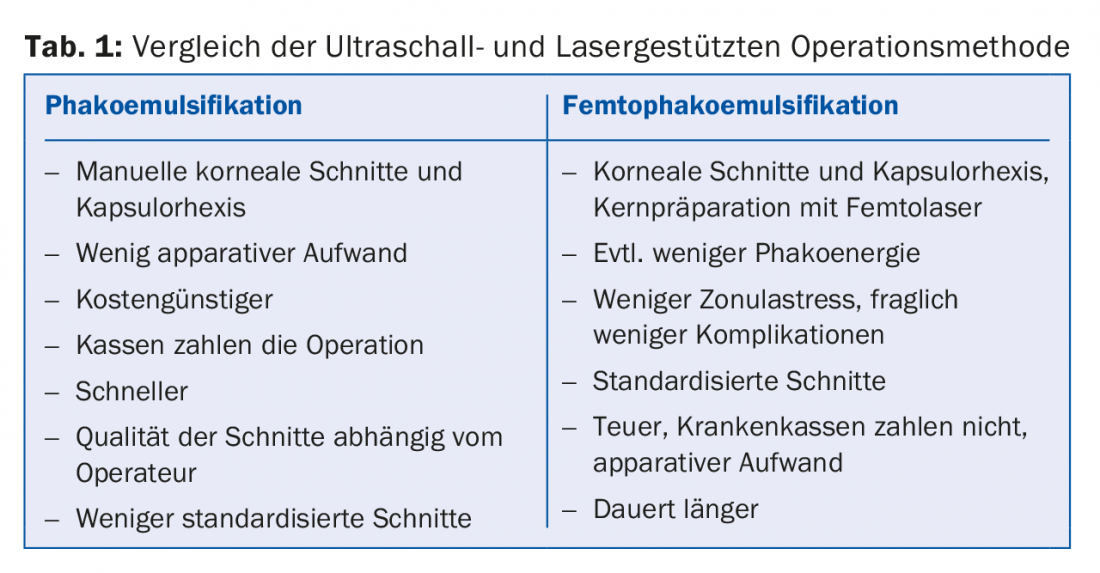
“Glaucoma”: In glaucoma, damage to the optic nerve occurs due to a mismatch between intraocular pressure (normal between 10-21 mmHg) and blood flow to the optic nerve. Approximately 15% of blindness worldwide is caused by glaucoma. Patients with black skin color, family history and pronounced myopia are particularly at risk. Affected patients are symptom-free for a very long time, because central vision is preserved for a long time and the visual field defects are perceived only very late.
Diagnostically, the intraocular pressure and the visual field are determined and the chamber angle and the optic nerve are assessed. In the meantime, the traditional devices are supplemented by innovations. From the age of 40, a check of the intraocular pressure is recommended every two years, from the age of 50 and in case of a risk constellation, it should take place annually. Basically, open-angle glaucoma, in which the trabecular meshwork is “blocked,” and narrow-angle glaucoma are distinguished. In the latter, the outflow of aqueous humor is disturbed due to an obstruction of the angle of the ventricle. An overview of the therapeutic options is given in Table 2.
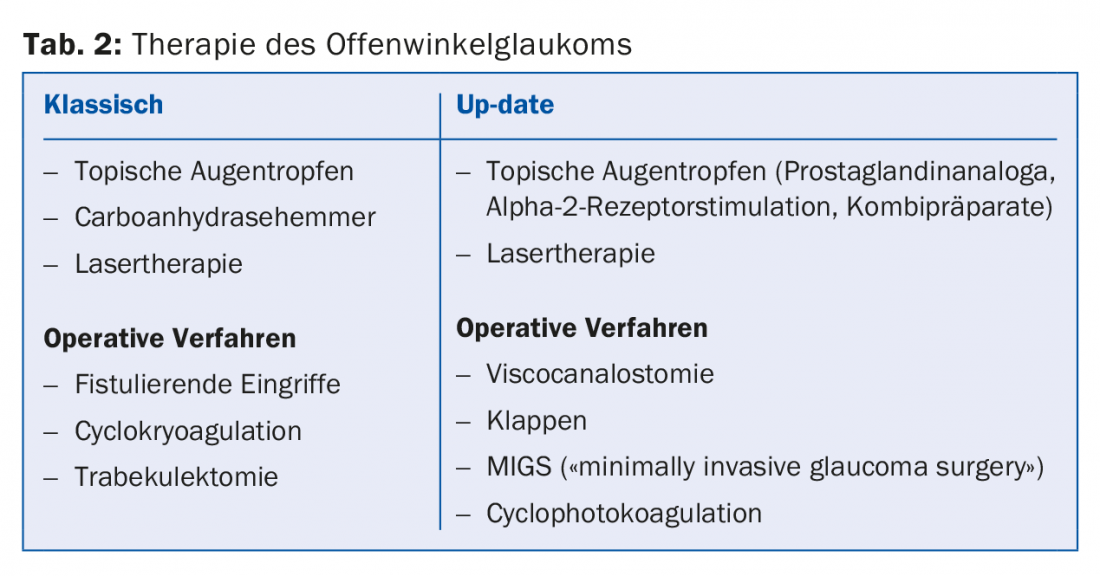
Presbyopia: Due to the decreasing elasticity of the lens and the ability of the eye to accommodate as well as a possibly decreasing ability of the ciliary muscle to contract, presbyopia occurs. Correction by means of glasses or contact lenses is possible. If there is a necessity to remove the lens (e.g. in case of a “cataract”), presbyopia can be corrected by using an appropriate artificial lens. Other surgical therapies (accommodative intraocular lenses, corneal inlays) have not been successful.
Age changes in the posterior segment of the eye
Age-related macular degeneration (AMD): A distinction is made between dry and wet AMD. In dry macular degeneration, there are deposits and sensory cell loss at the site of sharpest vision, which unfortunately cannot be counteracted therapeutically, the speaker reported.
The wet form is characterized by a growing through of vessels of the choroid under the retina. Fluid accumulation occurs and subsequently bleeding and scarring. Nicotine abuse is a risk factor, and high blood pressure appears to accelerate the transition of the early form to the wet form.
Diagnostically, funduscopy and optical coherence tomography (OCT) are used.
Therapeutically, a healthy diet (including vitamins C and E, lutein, and omega-3 fatty acids) is generally recommended, although smokers and ex-smokers should avoid beta-carotene administration due to the increased risk of lung cancer. In the case of one eye with wet AMD and the other with a more advanced dry form, nutritional supplements (vitamins C and E, zinc, copper, beta-carotene) can slow down the progression of the disease. For wet AMD, the therapy of choice is currently intravitreal injection of anti-VEGF.
Vascular occlusion: In arterial vascular occlusion, there is a very sudden loss of visual acuity, similar to a lamp going out, so it occurs more quickly than venous occlusion. In the former form, it is important to search for the cause of the embolism in order to eliminate it if possible. The prognosis here is poor with visual acuity improvement in 15-25% of cases. The same diagnostic procedure applies in the case of venous occlusion, although the workup can more often be performed on an outpatient basis by the primary care physician rather than as an inpatient. To exclude temporal arteritis, ESR and CRP should be determined in both forms.
Therapeutically, anti-VEGF injection can be used for the venous form.
Neurophthalmological age changes
Horton’s disease (arteritis temporalis): Horton’s disease occurs with an incidence of 15-30/100 000. Women are affected more often than men, with a ratio of three to one. The typical symptoms are headache in the temple area, pain when chewing and/or in the shoulder, fatigue, and double vision.
Diagnostically, the inflammatory parameters blood count, CRP and ESR should be determined.
Therapeutically, cortisone is initially administered in high doses i.v. and then, depending on the inflammatory parameters, gradually p.o.. If this is not done, there is a 95 percent risk of infestation of the partner eye.
Source: 57th Medical Congress LUNGE ZÜRICH in Davos, February 8-10, 2018.
Literature:
- Rapp, SJ: Lower Lid Subciliary Blepharoplasty Treatment & Management. Medscape, Drugs & Diseases, Plastic Surgery. https://emedicine.medscape.com/article/1281677-treatment
- Gollnick H, et al: Recurrence rate of superficial basal cell carcinoma following successful treatment with imiquimod 5% cream: interim 2-year results from an ongoing 5-year follow-up study in Europe. Eur J Dermatol 2005; 15(5): 374-381.
HAUSARZT PRAXIS 2018; 13(3): 41-44






